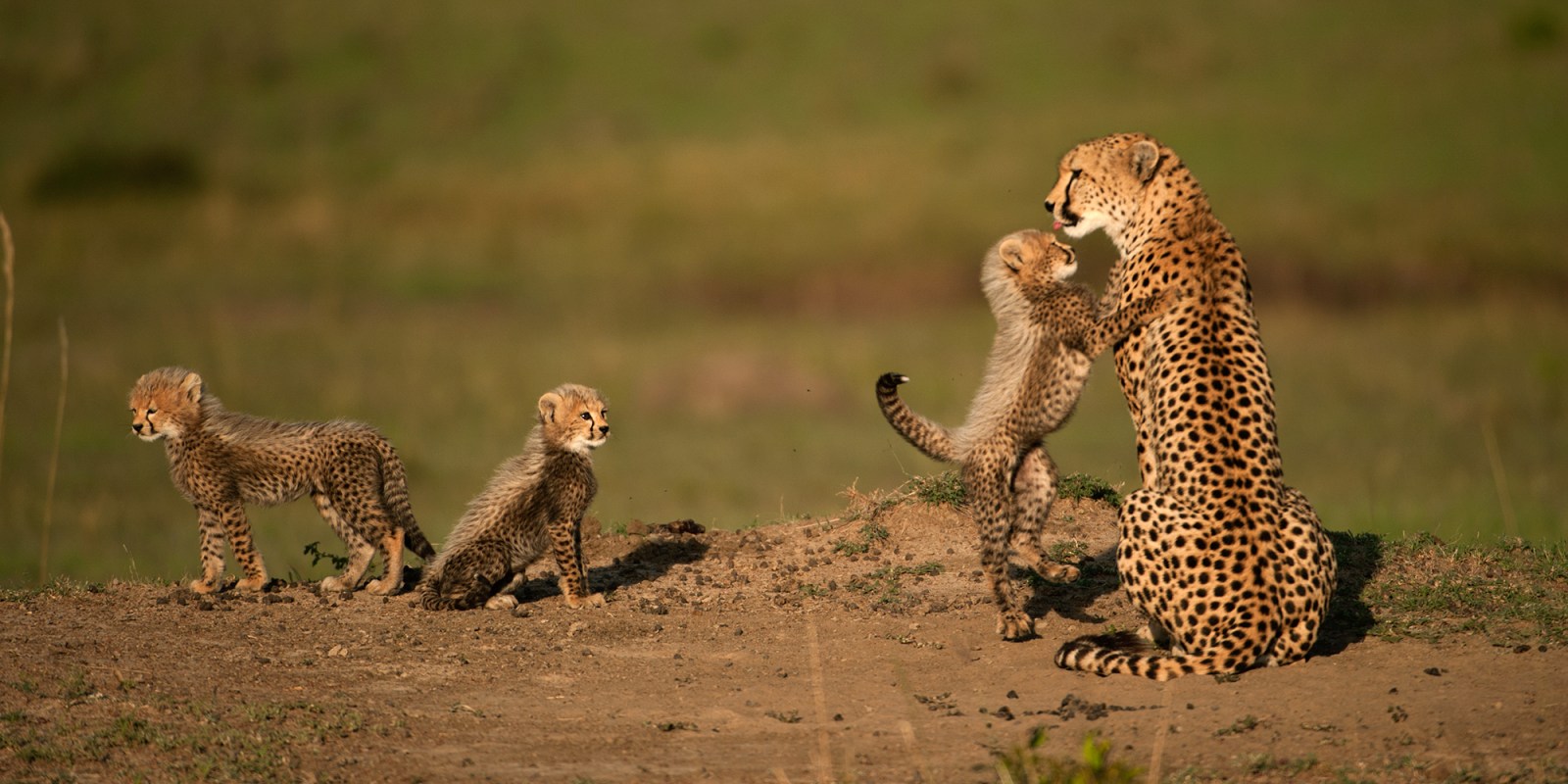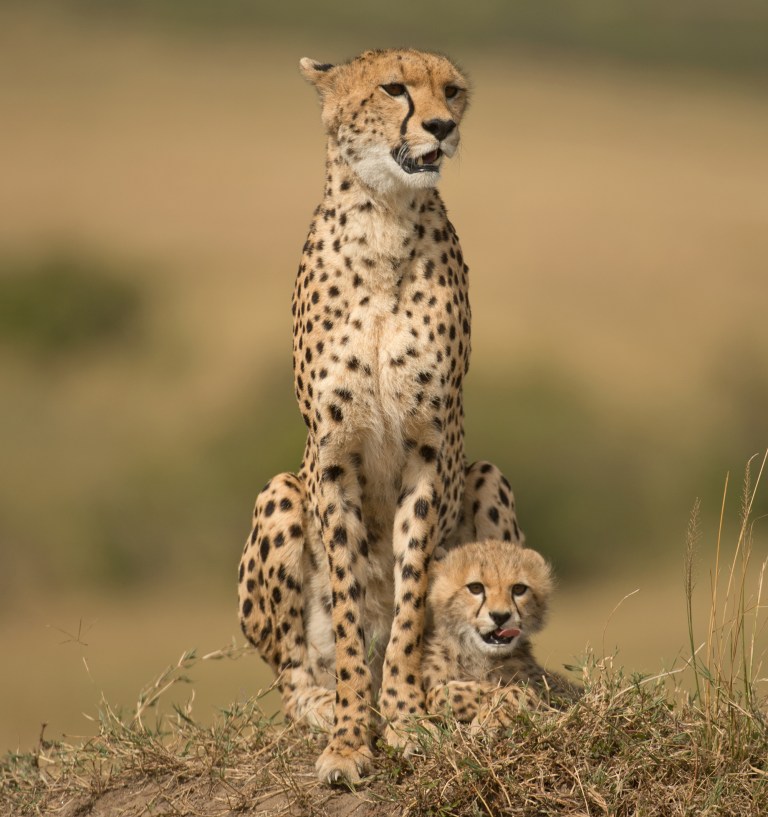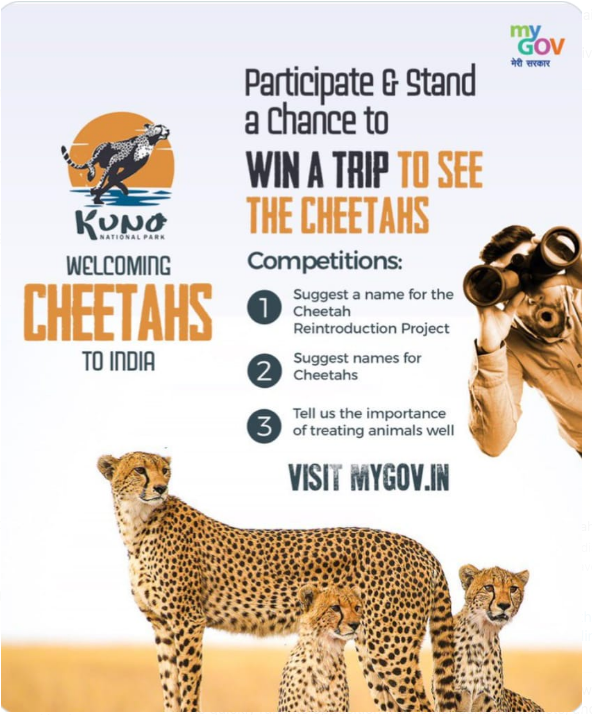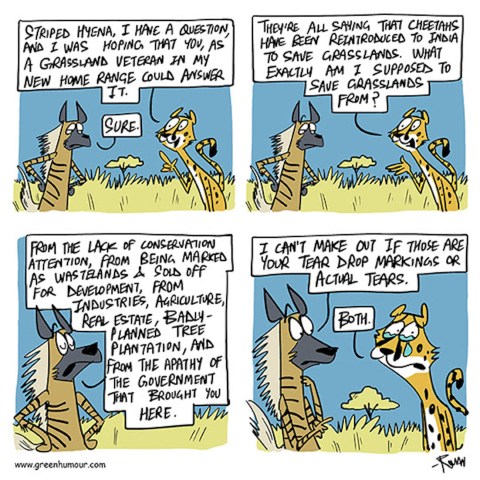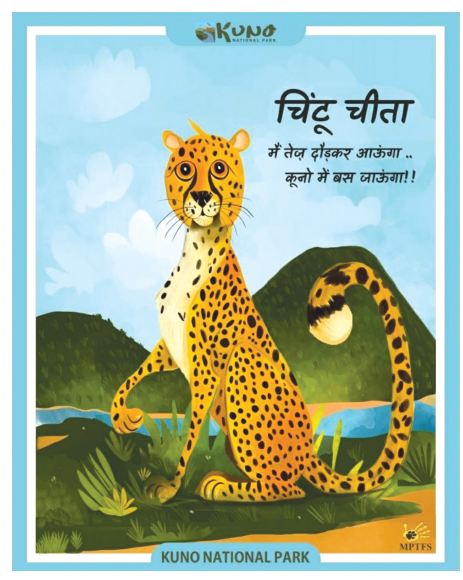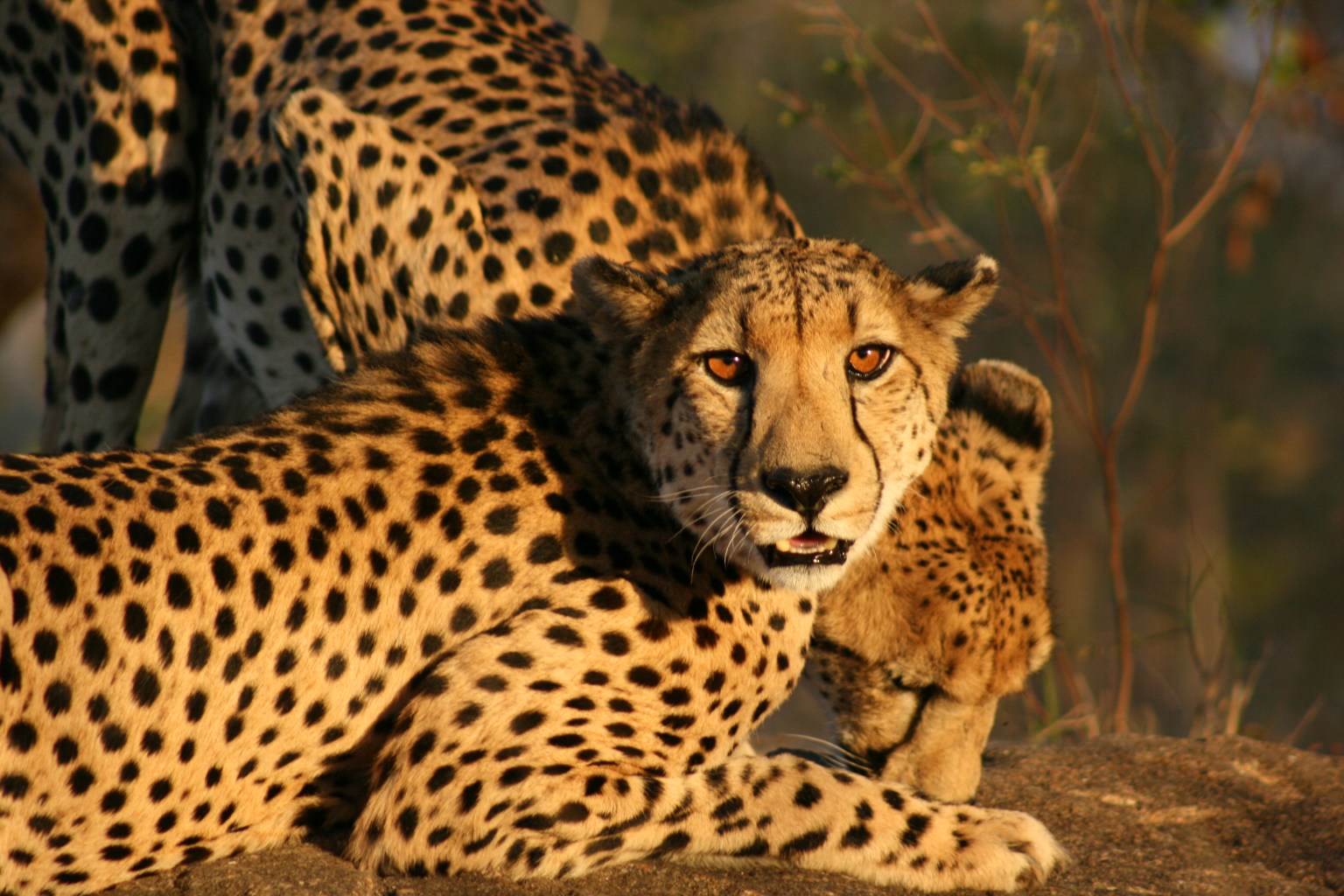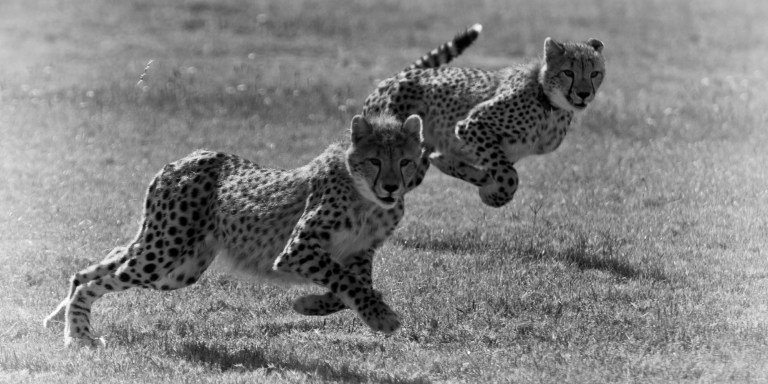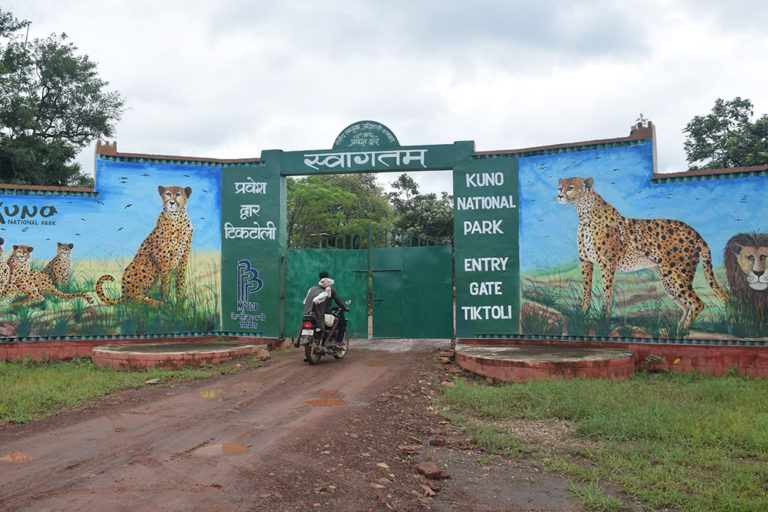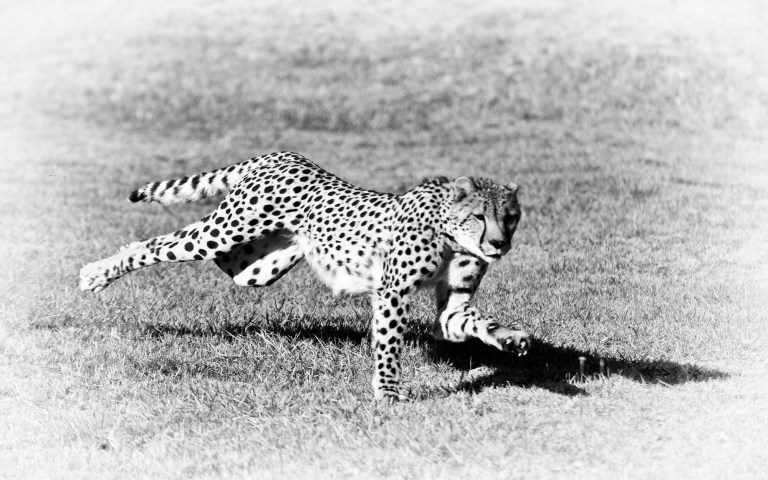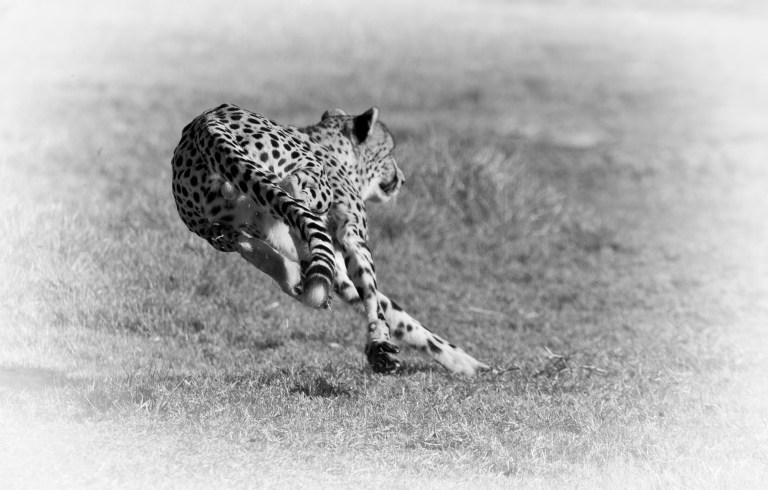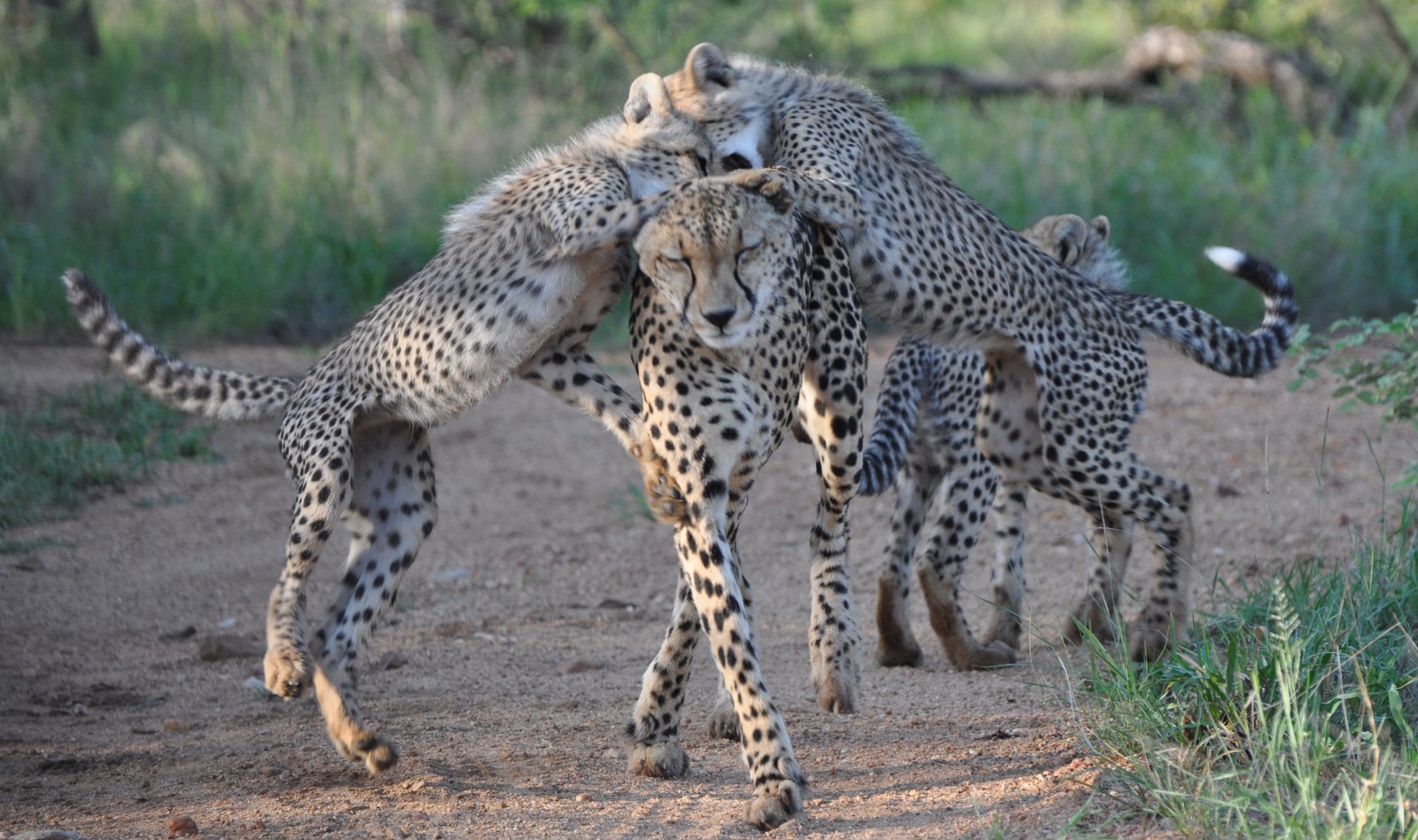
Cheetah mothers are attentive and hide newborn cubs in tall grass or move their den sites regularly. They generally give birth to a litter of four cubs. (Photo: Rosie Miles)
By Tony Carnie | 09 Aug 2022
Fifteen cheetahs — 12 from South Africa and three from Namibia — are about to embark on a 9,000km journey to India, where the government hopes to restore that country’s extinct population of the charismatic species.
_______________________________________________________________________________________________________________________________
Cheetahs were a widespread and intrinsic feature of India for millennia. The very name of this animal originates from the Sanskrit word chita/chitraka, meaning “the spotted one”.
Prized by the nobility because of their speed, cheetahs were frequently used for coursing (hunting down other animals such as antelope) but were also later shot for sport by hunters. The Mughal emperor Akbar is reputed to have kept 1,000 cheetahs in his menagerie, collecting as many as 9,000 during his 49-year reign in the 16th century.
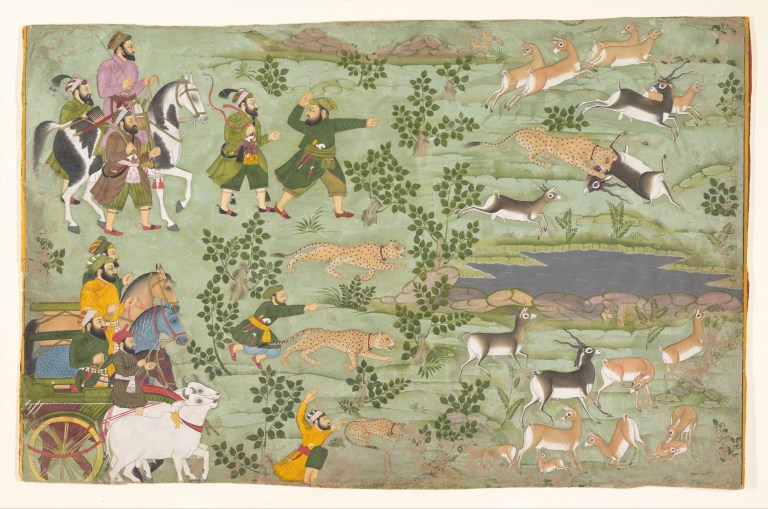
A painting of Shah Jehan using trained cheetahs to hunt blackbuck in Rajasthan in the early 1600s. (Image: The Met Museum, New York)
But the inability to breed them in captivity meant that cheetahs (and cubs) had to be constantly trapped in the wild to keep the sport alive over centuries. By the time the British arrived in India, the spotted ones were making their last stand and had vanished from the landscape almost entirely by the early 1950s.
That’s about to change.
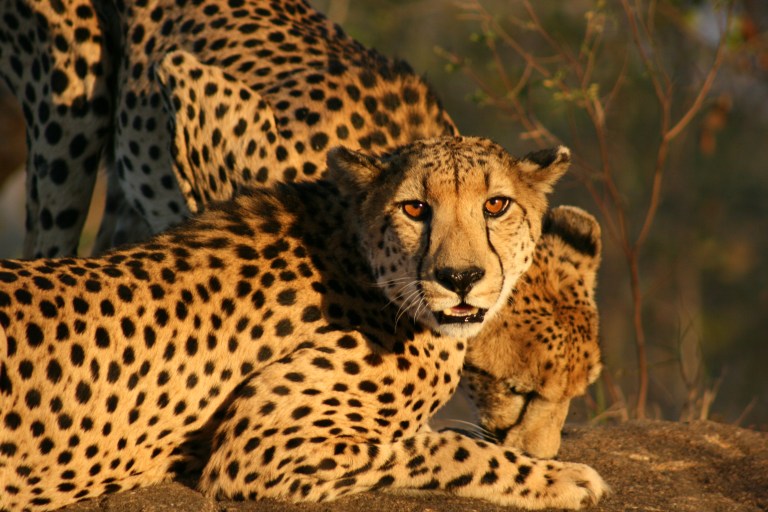
Some of the last cheetahs in India were shot in 1947, though wildlife historian and scholar Divyabhanusinh reports credible sightings of isolated cheetahs in remote areas into the 1960s and possibly 1975. (Photo: Constant Hoogstad)
Coinciding with India’s 76th Independence Day celebration on 15 August, 15 southern African cheetahs are due to touch down in New Delhi shortly before the official festivities. They will then be taken to their new home range in the Kuno National Park in Madhya Pradesh state, bringing to fruition a long-held ambition by several Indian wildlife officials to bring cheetahs back from extinction.
Well, almost…
Though visually identical, the southern African cheetah (Acinonyx jubatus jubatus) is slightly different from the Asiatic cheetah subspecies (A. j. venaticus), having been separated genetically for several thousand years.
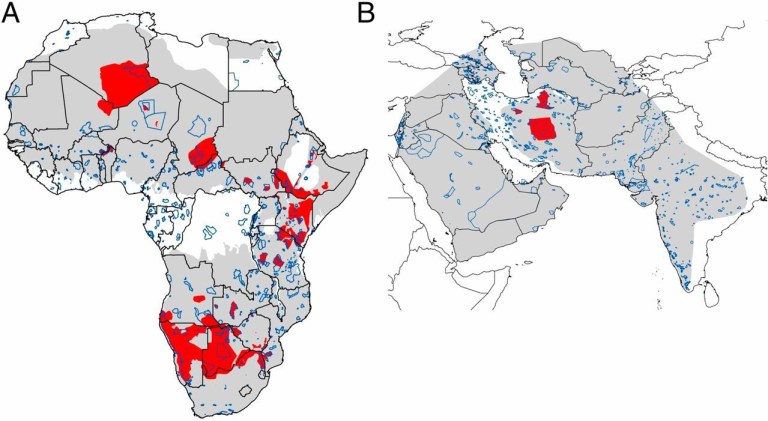
Cheetahs have vanished from 90% of their historical range in Africa and almost entirely the Middle East/Asia. The grey shading shows their historical range, and the red shading shows the range where cheetah are believed to be resident. (Source: PNAS / Durant et al 2016)
India has been trying to source Asiatic specimens since the mid-1950s. During the 1970s, Prime Minister Indira Gandhi was on the brink of reaching an agreement to swap Indian lions for Iranian cheetahs when the Shah of Iran was swept from power. The deal collapsed.
At the time, Iran still had about 400 wild cheetahs. Now there are fewer than 30 critically endangered Asiatic cheetahs left in the world (all in Iran) and this wild population is too small to be fragmented for relocation to other nations.
But the dream of bringing cheetahs back was revived in 2009 by the Wildlife Trust of India, culminating in a decision by the Supreme Court of India in 2020 to sanction the acquisition of cheetahs from southern Africa. The court ruled that a committee of experts should take a careful decision about the viability of introducing these animals to the Kuno National Park first, followed by a larger-scale introduction to other large Indian wildlife reserves.
This is where southern Africa fits in.
Should the experiment take root, up to 75 cheetahs could be shifted to India over the next 10 years.
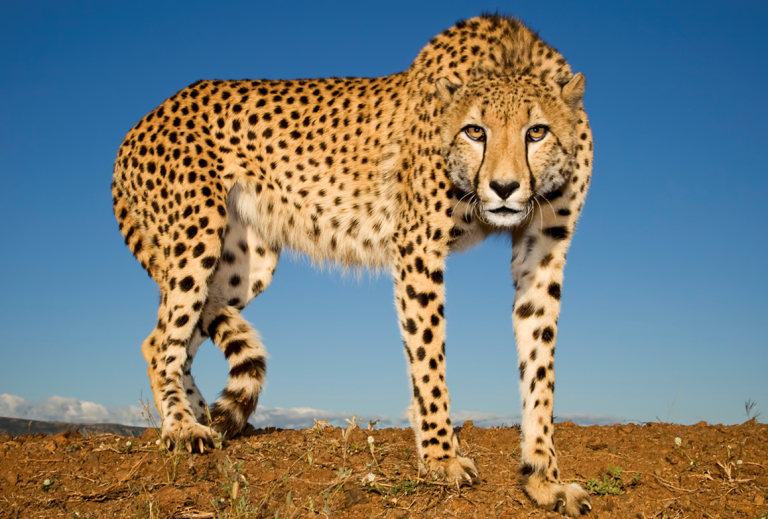
A cheetah in Welgevonden Game Reserve in Limpopo. Somewhere between 60% and 80% of cheetah kittens die before reaching adulthood. Most are killed by lions, hyenas and leopards. (Photo: Mark Matheson)
Namibia, Botswana, South Africa and Zimbabwe conserve the largest remaining populations of wild cheetahs in the world — down to just 7,000 globally.
To boost these precarious numbers, the Johannesburg-based Endangered Wildlife Trust initiated the Cheetah Metapopulation Project in 2011 to shift and swap wild cheetahs between relatively small but securely fenced wildlife reserves.
Led by Vincent van der Merwe, the project has proved a remarkable success, more than doubling this metapopulation from 217 to 504 cheetahs in less than a decade. The animals are now spread across 69 reserves in four countries.
Relocations
In 2017, Van der Merwe coordinated the first reintroductions into Malawi, followed by further moves to Zambia and Mozambique. Now, should everything go to plan, 15 cheetahs will be heading to India shortly to test whether they can adapt to very similar conditions in India.
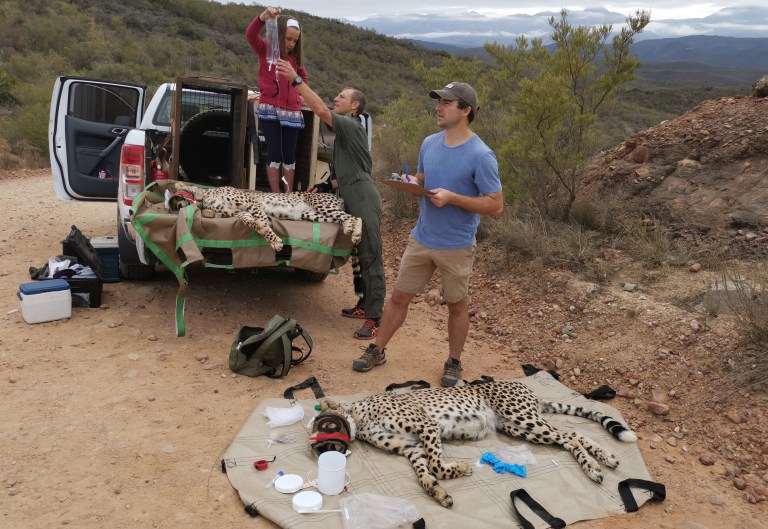
Vincent van der Merwe (right) and wildlife vet Dr Brendan Tindall oversee the translocation of another two cheetahs from a South African reserve. (Photo: Cynthia Stroo)
“There are no major differences between the savannas of Africa and India, and (apart from dense forest, extreme mountains and desert) our metapopulation cheetahs persist in a wide variety of biomes including semi-desert, thicket, sand forest, savanna and grassland.”
As coordinator of the metapopulation, his job was to identify a suitable founder population — young, ecologically functional and predator-savvy cheetahs.
In southern Africa, a crucial factor for successful cheetah relocations has been securely fenced reserves, frequent animal swaps to avoid inbreeding and the sound management of other predator densities such as lions and leopards that often kill cheetahs and their cubs.

Cheetah metapopulation coordinator Vincent van der Merwe on a recent visit to Iran. (Photo: Supplied)
“When released into Kuno National Park in India, these cheetahs will have to fend for themselves in an environment where competing predators such as leopards, wolves and sloth bears will be out to get them,” says Van der Merwe, acknowledging that there could be heavy initial losses (especially very young offspring) due to predation, starvation or snaring.
In South Africa, translocated animals are normally kept briefly in boma enclosures and supplied with fresh antelope meat shot by rangers.
In India, however, where such killing is not permitted for cultural and religious reasons, the new cheetahs will have to fend for themselves initially in 5ha bomas. Then they will be released after the monsoon season into the unfenced 75,000ha reserve, which is surrounded by a 42,000ha buffer zone.
The 12 South African cheetahs have been sourced from five protected areas — four from Tswalu Kalahari Reserve in the Northern Cape; three from andBeyond Phinda Private Game Reserve in KwaZulu-Natal, two from Welgevonden Game Reserve in Limpopo, two from the Waterberg Biosphere (Limpopo) and one from Mapesu Private Game Reserve (Limpopo).
The costs of capturing the animals and for disease testing, vaccinations, tracking devices and training of Indian wildlife officials have been paid by the National Tiger Conservation Authority of India.
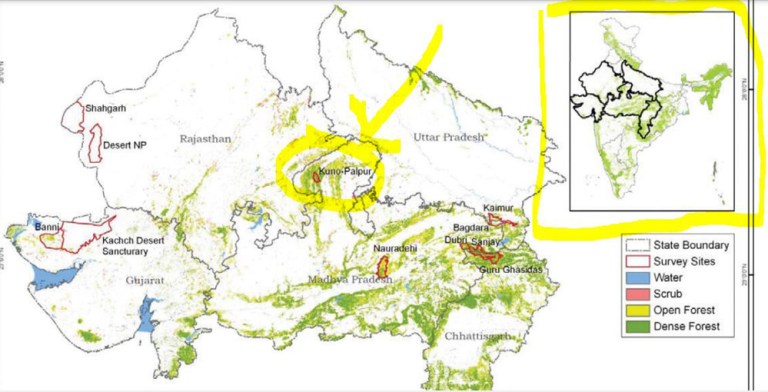
Locator map showing Kuno National Park where the first southern African cheetahs will go. (Photo: Supplied)
Professors Adrian Tordiffe and Leith Meyer of the University of Pretoria’s Centre for Veterinary Wildlife Studies are also playing a key role in the cheetah introduction.
Tordiffe said his role was to get the animals safely to India and prevent them from becoming infected or transmitting any disease to Indian carnivores.
He notes that the animals will not be lost to South Africa as the metapopulation project involves frequent exchange of animals to ensure effective gene flow.
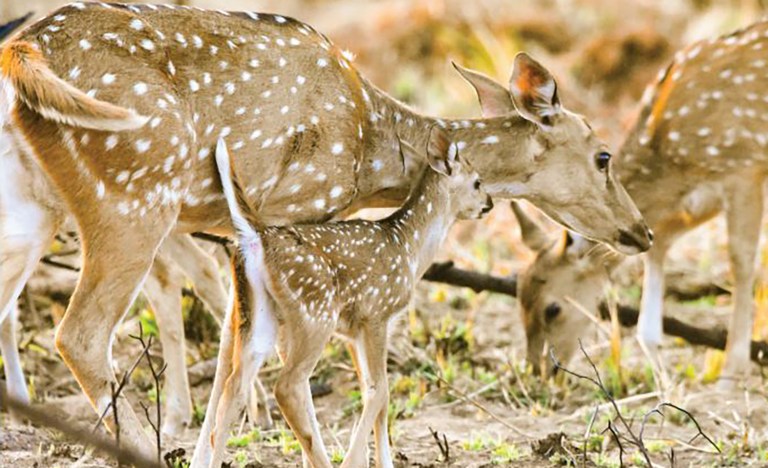
Chital antelope in Kuno National Park. (Photo: Supplied)
“Very few new reserves can accommodate cheetahs in South Africa, and if no new space is found to accommodate the expanding population, animals will have to be placed on contraceptives to limit their numbers. This would be a tragedy, when there are protected areas within their historical range elsewhere in the world,” he said.
Nevertheless, Van der Merwe acknowledges that there is a long journey ahead.
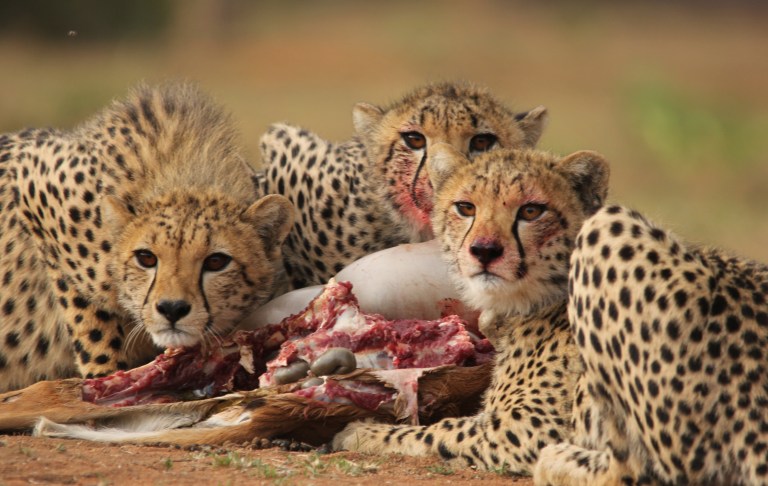
For a hunt to be successful, cheetahs need to get as close as possible to their prey, before starting the final sprint. They will try to get within 100m of their target before embarking on a chase and mostly choose prey isolated from the rest of the herd. (Photo: A Donaldson)
“The Indian conservation authorities will learn as we go along, as we have learnt in southern Africa where more than 70 cheetah reintroductions have been attempted since 1965.
“Mistakes will be made initially, but lessons will be learnt and Indian authorities will develop capacity over time. Keep in mind that India has a good track record in large carnivore conservation, with their wild tiger population more than doubling in size since 2006. The ultimate goal will be cheetah reintroductions into their tiger reserves as these are the best-protected areas in India.” DM/OBP



